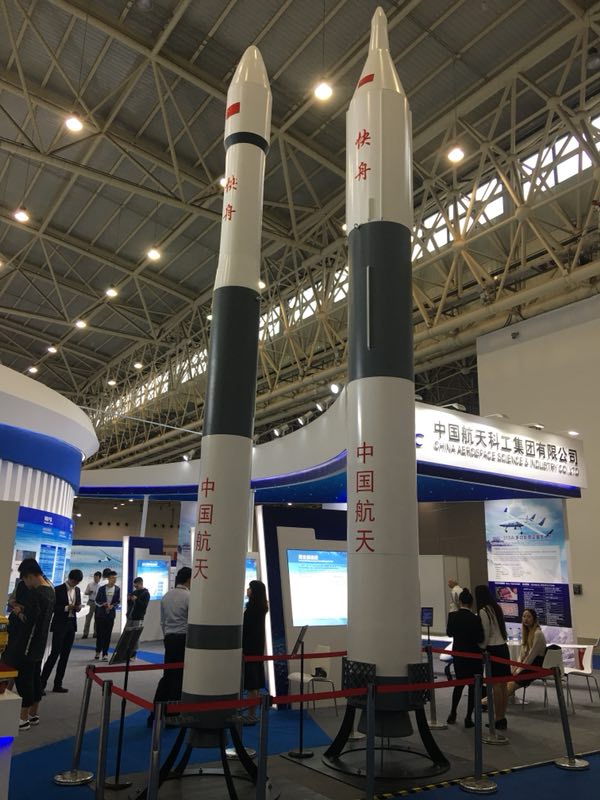New rocket raring for busy launch schedule


China Aerospace Science and Industry Corp, a major space and defense contractor, plans to carry out at least eight commercial launches using its Kuaizhou 1A carrier rocket before the end of 2019, according to a high-ranking executive.
Zhang Di, a senior rocket scientist and chairman of Expace Technology, a CASIC subsidiary that provides commercial launch services, told China Daily in an exclusive interview on Wednesday that two Kuaizhou 1As are scheduled to lift off before the end of this year from the Jiuquan Satellite Launch Center in Northwest China.
Next year, six Kuaizhou 1A launches are scheduled, with one to be conducted for a foreign client, he said, noting that in addition to these confirmed launches, Expace Technology is in talks with clients on launch service contracts involving more than 10 new Kuaizhou 1As.
"The rocket is popular in the commercial launch market. We have made production schedules for at least 19 Kuaizhou 1As," Zhang said.
The rocket scientist made the remarks on the sidelines of the Fourth China International Commercial Aerospace Forum, which opened on Wednesday in Wuhan, Hubei province. Co-hosted by the Wuhan city government and a number of space contractors, the three-day forum will see about 400 attendees from 12 nations including the United States, Russia and Germany.
Kuaizhou is the largest solid-propellant rocket family in China, as opposed to the Long March series, which mainly relies on liquid fuel.
The Kuaizhou 1A's first mission was in January 2017, lifting three small satellites from Jiuquan into a sun-synchronous orbit.
The 20-meter rocket has a liftoff weight of about 30 metric tons. It is capable of sending 200 kilograms of payload into a sun-synchronous orbit, or 300 kg of payload into a low-Earth orbit.
Beyond Kuaizhou 1A, Zhang's company is developing the Kuaizhou 11, which will be China's largest and most powerful solid-propellant carrier rocket. The new type will have a length of 25 meters, a diameter of 2.2 meters, and a liftoff weight of 78 tons. It will be able to place a 1-ton payload into a sun-synchronous orbit at an altitude of 700 km, or a 1.5-ton payload into a low-Earth orbit.
"Kuaizhou 11's research and development has been proceeding well. We hope that it will make its first flight in the near future," Zhang said.
He anticipated that compared with Kuaizhou 1A, Kuaizhou 11 will have even brighter prospects because it will have a stronger launch capacity that will allow it to lift a wider range of satellites.
"It will be able to place six to 10 small satellites into orbit during a single mission, which will be very efficient and economical for our customers," Zhang said. "We have been in talks with several clients on Kuaizhou 11 missions."




































